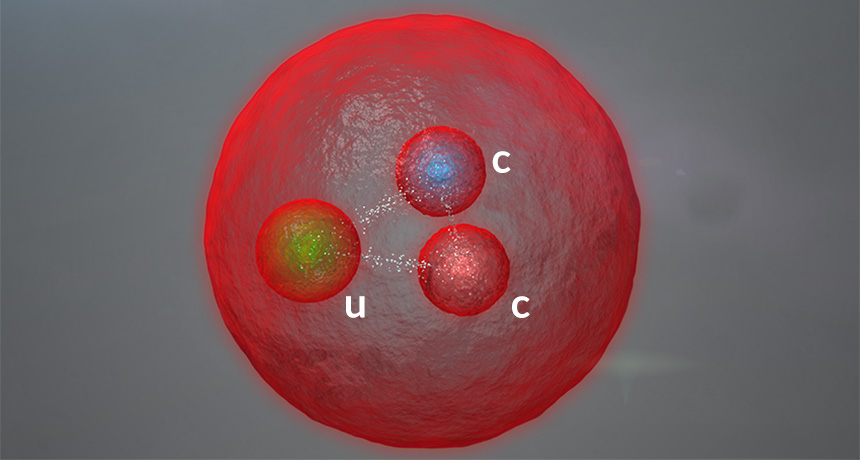Newfound particle relies on its charm(s)

A newly discovered particle is dishing out a double dose of charm.
The newcomer is a baryon, meaning that it’s composed of three smaller particles called quarks — in this case, two “charm” quarks and one “up” quark. Detected by the LHCb experiment at CERN, the European physics laboratory near Geneva, the baryon is the first to be discovered with two charm quarks, LHCb scientists reported July 6 at the European Physical Society Conference on High Energy Physics in Venice, Italy. Scientists produced the particle by ramming protons together at CERN’s Large Hadron Collider and sifting through the aftermath.
Baryons can be composed of a variety of quark combinations, two up quarks and one charm quark, for example, or one “strange” quark and two “down” quarks. Because the charm quarks are a particularly heavy variety of quark, scientists should be able to use the new particle to perform different types of tests of their theories of particle interactions.
Although the particle, called a doubly charmed Xi baryon, is the first of its kind, its appearance is no surprise — physicists’ theories predicted its existence. The particle’s mass — about four times that of the proton — agreed with expectations.
Data from a previous experiment had hinted at the presence of a similar doubly charmed particle, but the results were disputed. In 2002, scientists with the SELEX experiment, located at Fermilab in Batavia, Ill., reported that they had discovered a particle composed of two charm quarks and a down quark (SN: 7/6/02, p. 14). But the particle’s properties didn’t align with theoretical expectations, and other experiments couldn’t confirm the results. The new particle further casts doubt on SELEX’s results, because the two baryons should be close in mass, but instead they differ by a significant margin.